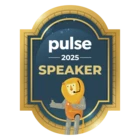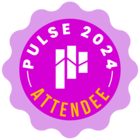Hi folks,
do you use surveys for the visitors or members, to improve community´s user experience? How they have worked?
We use and I think you use as well.
Background:
We have run our community for years. We have started with pop up -surveys. First tweaks we made we adjusted the trigger time how quick survey triggers, after user landed to the community.
After those tweaks we got less feedback that survey is annoying because “I just wanted to read the topic and pop up filled my screen!#”%%&6”. So tweaks we made were ok.
Most of the feedback were mostly about our products. Only few feedback were for the community itself. And it is sad if you are community captain. It is ok for the company of course.
Then we made new changes to the survey. We choosed to get rid of the pop up -survey and we added floating feedback button to each and every community page. After this change, number of feedbacks dropped dramatically. I understand, especially when using mobile, floating buttons are difficult on small screen. When using desktop you dont pay attention to the button. Feedbacks we still got were about the products.
Now we have made latest changes. We asked from the users couple of months back, what kind of survey users would like to answer the most. They said that embedded is the best so we added HTML widget to the Topic sidebar and now we collect feedback in each and every topic (discussion, question, article).
We have 5 smileys there, where user can choose. We ask also to explain their response freely with words. Lastly we ask what people want to read in the community in the future. With this survey we want to improve our content.
Addition this embedded survey, we added pop up -survey to the community as well. With this survey we collect feedback about the overall experience about the community. We adjust the timing still, we dont want to annoy the users. We added pop up -survey because users said it is ok, if it doesn´t appear too soon.
We´ll see how this combination works.
--
I would like to hear your thoughts:
- Have you used embedded surveys in the community and how they have worked?
- What kind of survey type works the best you think? Pop up, embedded, floating feedback button, feedback button in the page or something else?
- What kind of feedback you mostly get from the user surveys - feedback about the products or feedback about the community?
I´d say even I ask feedback about the content and the community, because most of the users come to our community to solve their problem and this is the only thing they can think about in that moment, this is the reason they give the feedback about the product. No matter what kind of survey type is in use and what I ask from them.



